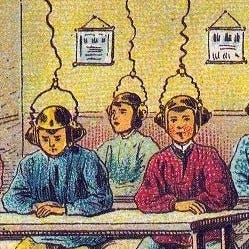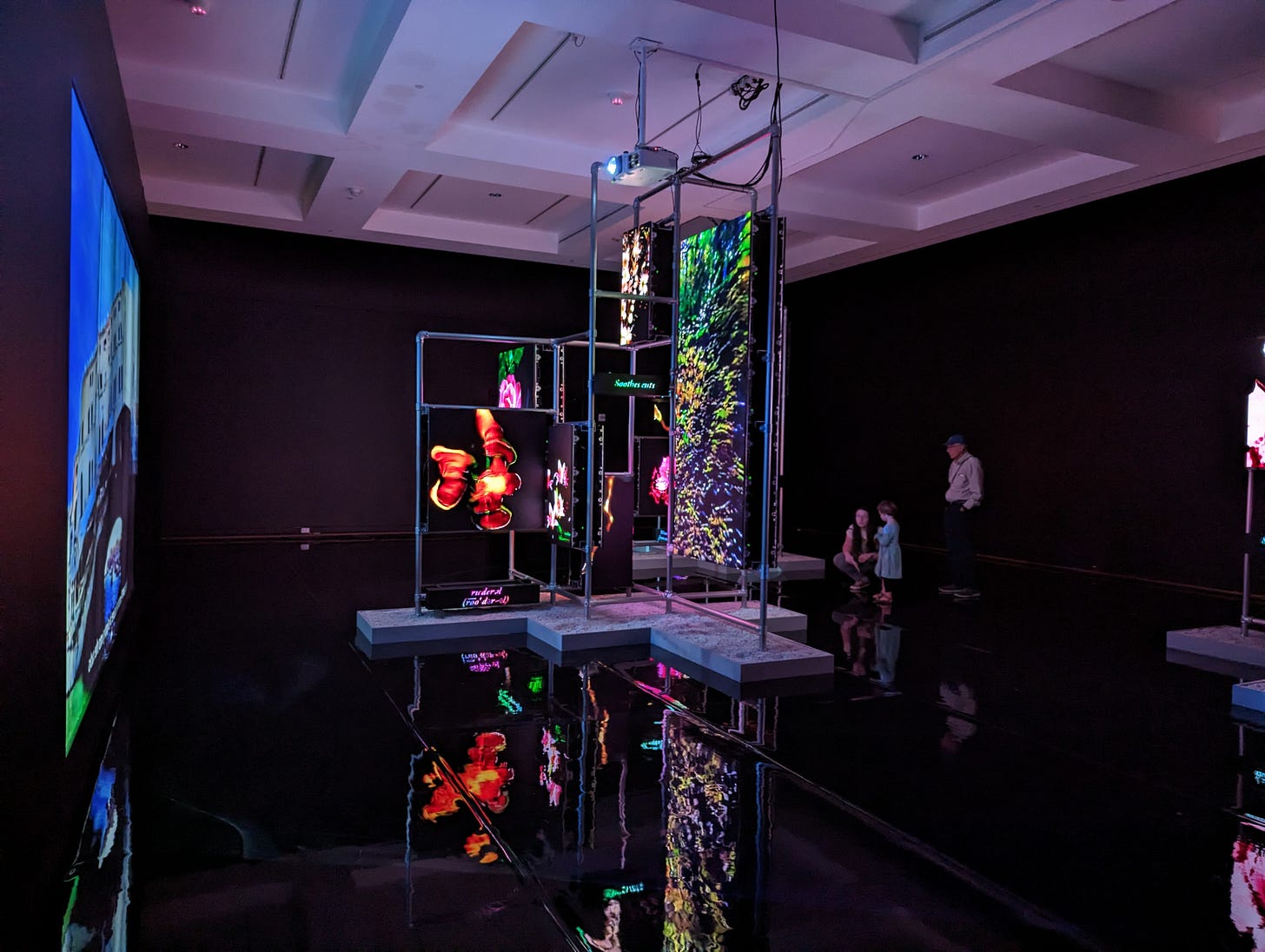I recently attended an exhibit at the Portland Art Museum entitled This is the Future, by Hiro Steyerl. This installation consists of a film and a set of video sculptures. The film tells the story of a woman incarcerated for future crimes1 who plants seeds in the future, and then the video sculptures are the plants that grow from the seeds, which have medicinal uses for modern ills (addiction to social media, etc). It’s in a dark room and it’s pretty loud, so the experience is immersive but not particularly pleasant or relaxing (my four-year-old was frightened and had to leave early). Despite my efforts, I didn’t really feel anything. I spend a lot of my time either directly working with or thinking about the implications of AI and related technologies, so maybe there just weren’t many new thoughts or feelings for me to have, but I also don’t really “get” contemporary art2. Who are the people who learn better from art than from more conventional sources? I believe they exist, but it’s such a different mindset from my own.
I was listening to a FuturePod episode recently that touched on similar themes. Episode 77 is an interview with Finnish futurist Roope Mokka. Among other things, Roope talks about his project Bodytalk, where rave-style ecstatic dance is used as a way to alter mental states and make people more receptive to possible futures beyond those that dominate our conversation and culture. As above, I believe that there are people in the Venn diagram overlap of “unable to imagine alternative futures without assistance” but also “willing to participate in a rave but nerdier”3, but it’s so far from my personal temperament and professional experience that it’s like a foreign language.
If you’ve had good experiences with contemporary or experiential art that helped you understand possible futures in a new or useful way, I’d love to hear from you - leave a comment below.
The Minority Report kind, not the David Cronenberg kind.
Art is, in one way, like every field I’ve ever been an expert in: it relies on convincing the people with money that some intangible value is being created, despite quality or outcomes being nearly impossible to measure.
Especially in Europe, presumably.




